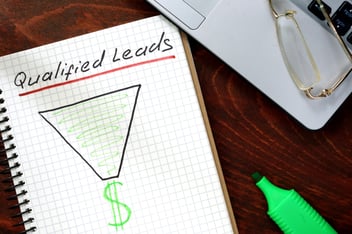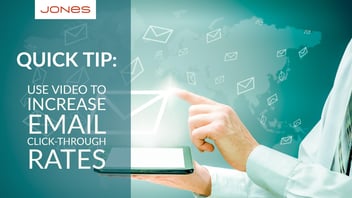Why Your Inbound Leads Aren’t Turning Into Sales

Lead generation isn’t enough. Yes, it takes new leads to drive growth, and inbound marketing is a key way to generate leads that are already a step above purchased lists and cold-calls.
But leads alone don’t meet the goals of increasing sales and revenue. In order to meet those goals, inbound leads have to be turned into customers. If your conversion rates aren’t meeting expectations, perhaps you are making one of these four mistakes.
1. You aren’t attracting the right leads.
Not all leads are equal. Attracting leads starts before you even create content for your inbound marketing effort - it starts with identifying who your ideal customers are. Defining customer personas is the first step to determining what types of content you will create and which keywords you will use.
For example, if you provide billing software for healthcare providers, you want will want to create content that addresses their concerns, such as incorporating insurance benefits or providing the documentations patients need for their flexible spending accounts. By creating specific content such as this, rather than general “business accounting” content, you will narrow the leads you generate.
After all, you don’t need every small business in town as a lead, if you don’t have a solution to sell them.
More on targeting your content to buyer personas:
2. You aren’t responding to leads quickly enough.
Studies of online lead generation have shown that between 35 and 50 percent of sales end up going to the vendor that responds first to an inquiry. As soon as an interested prospects interacts with your website in a way that provides their contact information (such as subscribing to your blog, downloading a white paper, or registering for a webinar), your automated system should send an immediate email establishing contact.
Are you comparing automated systems for content management, lead nurturing, and sales enablement? Let us give you a tour of HubSpot’s capabilities. Schedule a demo with JONES.
3. You aren’t giving leads relevant follow-up information.
If you are already using an automated system, like HubSpot to instantly respond to queries and contacts on your website, but nothing more develops, then you may not be responding appropriately.
You shouldn’t send the same generic response to everyone who interacts with your website. Starting with the first email response, each communication with your lead should be personalized not only with the information you have about the person (name, company, etc.), but also with offers that are directly related to the lead’s interaction on your site.
If they downloaded a case study about increasing collection rates of health insurance co-pays, make sure your next email references that topic and offers an asset that provides more solutions for that particular problem. The offer could be a script for reception staff to use in collecting co-pays up front or a template for reviewing past due accounts to pinpoint the most common barriers to collecting on those accounts.
Read more: 7 Ways to Personalize Your Marketing Content
4. Your leads aren’t yet ready to buy.
Chances are that when a lead first enters your system after coming across your blog post or other content in an online search to solve a problem, they aren’t ready to buy yet. That lead is just doing research.
In fact, HubSpot has found that as few as 1-2 percent of those people first visiting your website may be ready to close a deal.
That why your first email response isn’t a “buy our product” push. Instead, that first email is just the beginning of a series of offers meant to keep communication open, maintain top-of-mind-awareness and build your brand’s reputation as the lead continues the research process.
Lead nurturing is the process of sending an automated series of emails to a lead in order to prequalify them. Each offer in the nurturing workflow indicates movement through the sales funnel, from awareness and education to consideration and comparison.
The timing of the emails is based on a combination of lead behavior and the time it typically takes your company’s leads to make a purchasing decision.
When the lead takes an action that indicates a readiness or willingness to consider your solution, that is when your marketing and sales team, using an agreed upon lead qualification standard, execute the hand-off to complete the sales cycle.
Lead nurturing—automated, timely and relevant communications and offers—can provide:
-
4-10 times higher response rates than standalone, generic email blasts.
-
Less wasted time by sales on leads that are not ready or qualified to buy.
-
Increased information about leads to be passed on to sales reps for warmer conversations. (More on maximizing lead intelligence.)
-
Up to 47 percent larger purchases compared to non-nurtured leads.
You’ll find the steps to setting up a lead nurturing program in our Introduction to Lead Nurturing ebook. Download it today to see how you can turn more of your hard-earned leads into sales.
-1.png?width=1652&height=294&name=Jones(RGB)-1.png)












